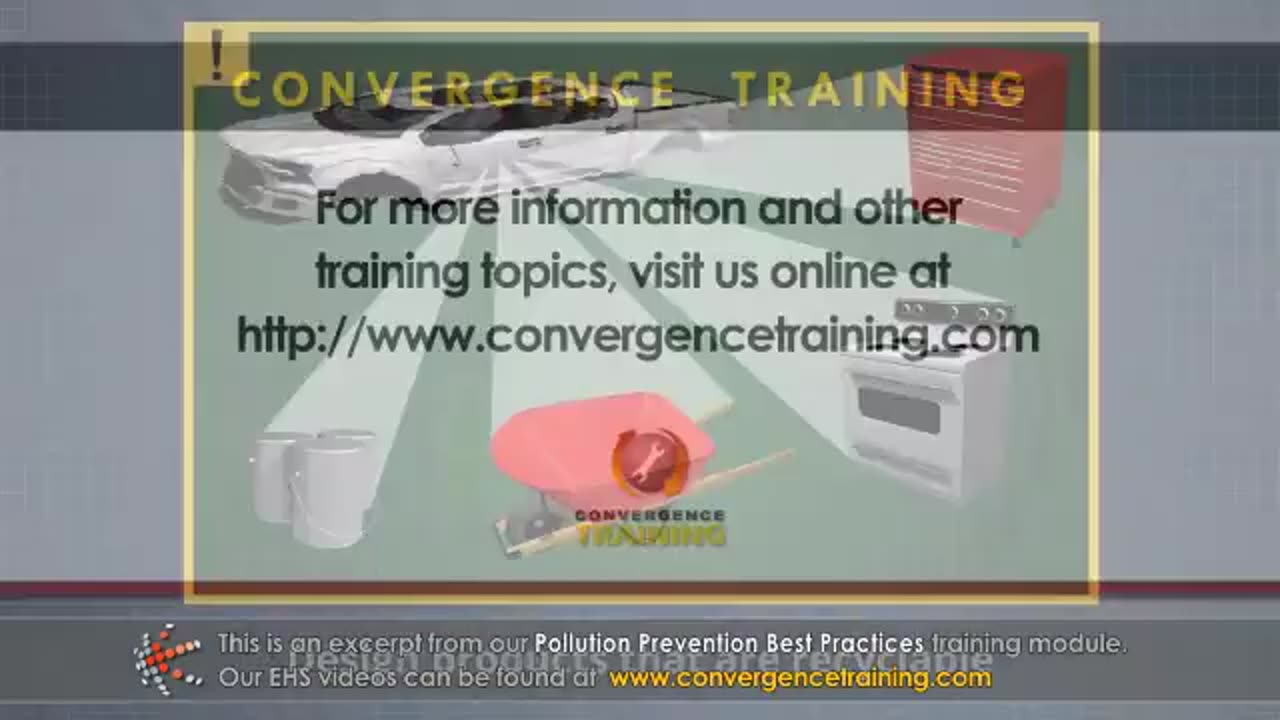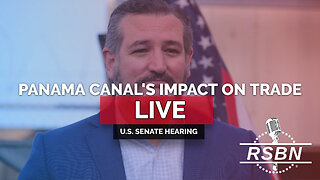Premium Only Content

Pollution Prevention Best Practices
### **Pollution Prevention (P2) Best Practices**
Pollution Prevention (P2) focuses on reducing or eliminating waste and pollutants at the source, rather than managing them after they are created. Below is a guide to implementing effective pollution prevention practices across industries and organizations.
---
### **1. Conduct a Pollution Prevention Assessment**
- **Identify Sources of Pollution**: Evaluate processes, operations, and materials that generate waste or emissions.
- **Assess Current Practices**: Determine existing waste management and environmental protection measures.
- **Set Goals**: Define measurable objectives to reduce waste, emissions, and resource use.
---
### **2. Source Reduction Strategies**
#### **Material Substitution**
- Use non-toxic, biodegradable, or less hazardous materials wherever possible.
- Replace solvent-based cleaners with water-based alternatives.
#### **Process Modifications**
- Optimize production processes to minimize waste generation.
- Redesign workflows to improve efficiency and reduce energy and material use.
#### **Product Redesign**
- Develop products that use fewer resources, are durable, and can be reused or recycled.
---
### **3. Energy Efficiency**
- **Upgrade Equipment**: Use energy-efficient machinery, lighting, and HVAC systems.
- **Renewable Energy**: Incorporate solar, wind, or other renewable energy sources.
- **Energy Audits**: Regularly assess energy consumption and implement improvements.
---
### **4. Waste Reduction and Recycling**
- **Minimize Packaging**: Reduce the amount of packaging used for products and supplies.
- **Implement Recycling Programs**: Sort and recycle paper, plastics, metals, and e-waste.
- **Encourage Reuse**: Promote reusable containers, pallets, and office supplies.
---
### **5. Water Conservation**
- **Fix Leaks**: Regularly inspect and repair plumbing systems to prevent water waste.
- **Install Low-Flow Fixtures**: Use water-saving devices such as low-flow faucets and toilets.
- **Recycle Water**: Implement systems for graywater reuse or rainwater harvesting.
---
### **6. Chemical and Hazardous Material Management**
- **Inventory Management**: Track chemical inventory to prevent overstocking and waste.
- **Safer Alternatives**: Replace hazardous chemicals with safer, less toxic alternatives.
- **Proper Storage**: Store chemicals securely to prevent leaks and spills.
---
### **7. Pollution Prevention in Operations**
#### **Air Emissions Control**
- Use filters, scrubbers, or other technologies to capture emissions.
- Regularly inspect and maintain equipment to reduce air pollution.
#### **Stormwater Management**
- Install sediment control measures such as silt fences or detention ponds.
- Prevent runoff by covering outdoor storage areas and properly managing chemicals.
#### **Spill Prevention**
- Implement secondary containment systems around storage tanks and containers.
- Train staff on proper spill response and cleanup procedures.
---
### **8. Employee Training and Engagement**
- Educate employees on pollution prevention practices and goals.
- Encourage employee involvement by soliciting ideas for reducing waste and improving efficiency.
- Recognize and reward individuals or teams for successful pollution prevention initiatives.
---
### **9. Sustainable Procurement**
- Purchase eco-friendly products and supplies, such as recycled paper or energy-efficient equipment.
- Work with suppliers committed to sustainable practices.
- Prioritize goods with minimal packaging and reduced environmental impact.
---
### **10. Monitoring and Continuous Improvement**
- Track Progress: Regularly measure and report on waste reduction, energy use, and emissions.
- Evaluate Effectiveness: Analyze data to determine which practices yield the best results.
- Innovate: Stay informed on new technologies and methods for pollution prevention.
---
### **11. Sector-Specific Practices**
- **Manufacturing**: Adopt lean manufacturing techniques to minimize waste.
- **Agriculture**: Use integrated pest management (IPM) and precision agriculture to reduce chemical use.
- **Healthcare**: Implement safe pharmaceutical disposal programs and use mercury-free instruments.
- **Construction**: Reduce debris by reusing building materials and minimizing site disturbance.
---
Would you like this content as a detailed guide, training material, or checklist? Let me know if you’d like examples or tools tailored to a specific industry!
-
 LIVE
LIVE
The Rubin Report
37 minutes agoWhat Happened After This A-List Celebrity Cried for Deported Criminals
2,092 watching -
 LIVE
LIVE
Benny Johnson
22 minutes ago🚨PANIC in DC: Trump Mass Fires DOJ Prosecutors, Opens Investigation into J6 Prosecutors | Kash Soon
3,880 watching -
 LIVE
LIVE
Right Side Broadcasting Network
15 hours agoLIVE: U.S. Senate Hearing on the Panama Canal's Impact on Trade and National Security - 1/28/25
4,452 watching -
 LIVE
LIVE
Steven Crowder
2 hours ago🔴 Trump's DeepSeek AI Warning Explained & His Quest to Eliminate Income Tax
65,254 watching -
 LIVE
LIVE
Bannons War Room
1 year agoWarRoom Live
29,970 watching -
 LIVE
LIVE
LFA TV
15 hours agoTRUMP OVERRIDES NEWSOM | LIVE FROM AMERICA 1.28.25 11am
3,426 watching -
 LIVE
LIVE
Wendy Bell Radio
6 hours agoNowhere To Run
12,498 watching -
 1:44:19
1:44:19
Graham Allen
3 hours agoTrump: “NO MORE TAXES” + Woke DOJ Prosecutors Are FIRED!! While Selena Gomez weeps...
36.8K25 -
 LIVE
LIVE
Rethinking the Dollar
32 minutes agoTuesday Morning Check-In: Will DJT Abolish the Income Tax?
104 watching -
 DVR
DVR
Randi Hipper
1 hour agoJIM CRAMER SHOCKS BITCOIN INVESTORS! LATEST PRICE UPDATE
1